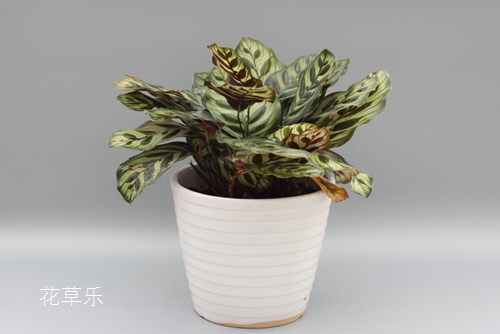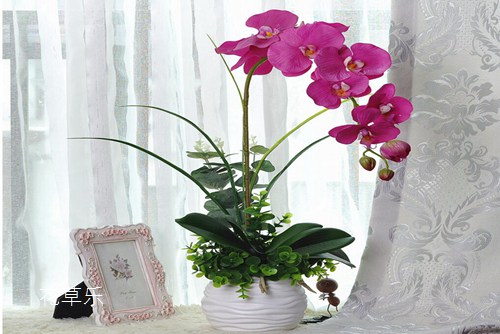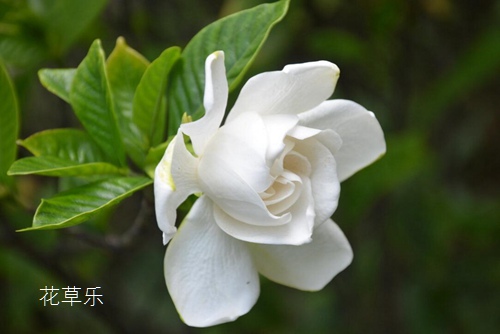How to raise peacock bamboo taro the culture method of peacock bamboo taro
Peacock bamboo taro is also known as five-color kudzu Yujin. Peacock bamboo taro plant shape is regular, the leaf is full of wonderful and exquisite markings, unique metal luster, brown patches like peacocks open screen, its colors are fresh, gorgeous and soft. Peacock bamboo taro prefers semi-shade and high temperature and humid environment, and is not resistant to cold. The suitable temperature for growth is 20 ℃ 30 ℃, more than 35 ℃ or less than 7 ℃. The overwintering temperature should not be on the low side, otherwise the leaves are easy to curl. It is required that the soil is loose, rich in biomass and well drained. How to raise peacocks and taros? Below, Huacao Le shares its breeding methods with you.
How to raise peacock bamboo taro the culture method of peacock bamboo taro

There are tubers at the base of peacock bamboo taro, and the plant height is 30ml / 50cm. The leaves are ovate-elliptic, basal, entire, 20 Mel 30 cm long, about 10 cm wide, dark purple, with white velvet; because the dense filamentous markings on both sides of the main vein of the leaf surface extend from the central vein to the leaf margin, showing a feathery arrangement, there are obvious small veins between the lateral veins similar to peacock tail feathers, hence the name peacock taro; the ornamented spot on the back of the leaf is lilac, the petiole is dark purple. The leaves have "sleep movement", that is, at night, the leaves extend upward from the leaf sheath to the leaves, fold in the shape of eggs, and then expand again after exposure to the sun in the next morning. Is the peacock taro poisonous. [view details]
I. Culture methods of peacock bamboo taro
1. Peacock bamboo taro likes the environment of high temperature, high humidity and semi-shade, and is not resistant to cold. The suitable temperature for growth is 18 ℃ 25 ℃, and the overwintering temperature is 5 ℃. It is disadvantageous to growth or survival if the temperature is over 35 ℃ or below 10 ℃; the air humidity requires 70% Mel 80%.
2. The pot cultivation of peacock bamboo taro should use slightly acidic loam with loose, good drainage and rich humus. Generally, rotten leaf soil, peat soil and river sand can be mixed with a small amount of mature base fertilizer as culture soil.
3. Adequate moisture should be given during the growing period, especially in summer and autumn, in addition to keeping the basin soil moist, it is also necessary to spray water to the leaves to cool and moisturize; moisture should be controlled after the end of autumn to help resist cold and winter.
4. During the peak growth period, dilute liquid fertilizer is applied every two weeks, but nitrogen fertilizer should not be too much.
The growing season from May to September should be placed in a shady or semi-shaded place. Excessive light or dry air can easily lead to scorched leaf tip and dull leaf markings; but the light should not be too weak, if it is placed in the dark room for a long time, it will also weaken the growth potential, not conducive to the formation of leaf color and lose the unique metallic luster of the leaf surface.
6. There are few diseases and insect pests in peacock taro, but if the ventilation is poor and the air is dry, shell insects will also occur. 1500 times dimethoate spray is used to control.
Peacock bamboo taro has strong adaptability and can be cultivated for a long time in indoor weak light environment. Often planted in small and medium-sized pots, decorative cloth is placed in the family study, bedroom, living room and other places.
Time: 2019-04-29 Click:
- Prev

How to raise Phalaenopsis? Phalaenopsis breeding method
Phalaenopsis is also called butterfly orchid. It is one of the most widely cultivated and popular orchid species. Its flower shape plump beautiful, bright color, flowering period can be as long as several months, strong growth potential, easy to cultivate. There are many varieties of colors, such as pure white, purple, white flowers and red lips, red dots on yellow background, red dots on white background and red stripes on white background
- Next

How to raise gardenia? Culture method of Gardenia jasminoides
There are not many gardenias in the world than many trees. Useful in body color, in harmony with Tao and Qi. The red takes the wind and frost, the green looks at the rain and dew. Ruthlessly move you, expensive in Yingjiangbo. It is du Fu's praise of gardenia. Zhi Yu flowers are white and fragrant, which can be used not only for viewing, but also for wearing. the fruit can also be used as medicine and has the effect of anti-inflammation and detoxification.
Related
- Fuxing push coffee new agricultural production and marketing class: lack of small-scale processing plants
- Jujube rice field leisure farm deep ploughing Yilan for five years to create a space for organic food and play
- Nongyu Farm-A trial of organic papaya for brave women with advanced technology
- Four points for attention in the prevention and control of diseases and insect pests of edible fungi
- How to add nutrient solution to Edible Fungi
- Is there any good way to control edible fungus mites?
- Open Inoculation Technology of Edible Fungi
- Is there any clever way to use fertilizer for edible fungus in winter?
- What agents are used to kill the pathogens of edible fungi in the mushroom shed?
- Rapid drying of Edible Fungi

